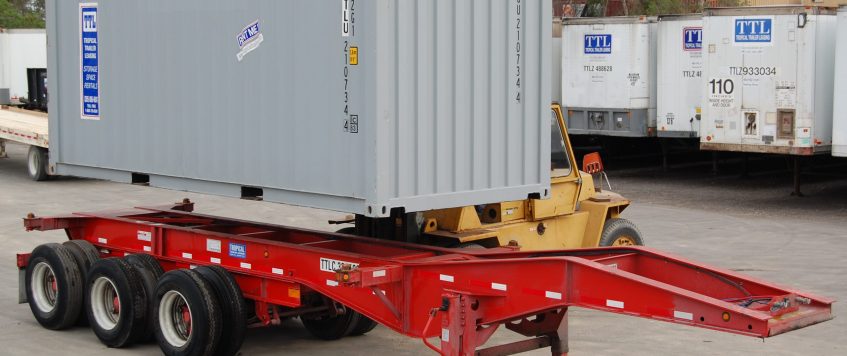-
12
Nov
A Simple Piece of Steel and Wheels Is Holding Up the Global Supply Chain
Transportation executives wrestling with the supply-chain gridlock that is frustrating U.S. importers say the ability to clear the bottlenecks rests largely on a simple piece of steel and wheels that has long been an afterthought in global shipping.
The trucking trailers, known as chassis and used to ferry containers from dockside terminals, have grown more difficult to find at the ports of Los Angeles and Long Beach, Calif., officials said, as a flood of imports has swamped the facilities and tied up equipment needed to keep goods moving.
Executives close to the operations around the ports say unraveling the gridlock at the coast, including the backup of more than 70 container ships anchored offshore and waiting for berth space, won’t be possible without solving equipment problems, such as the chassis shortage, that have hamstrung operations.
“The chassis are the biggest issue” in problems that stretch from the docks at the neighboring Los Angeles and Long Beach ports to warehouses deeper into California and intermodal rail yards in the Midwest, said Matt Schrap, chief executive of the Harbor Trucking Association, which represents port truckers in Southern California. The reason container ships are backed up outside the country’s biggest container seaport complex, according to Mr. Schrap and other officials: because dockworkers can’t unload ships quickly because terminals are full of boxes that truckers can’t pick up because they can’t find a chassis.
There are roughly 115,000 chassis at the ports of Los Angeles and Long Beach, according to DCLI, a major chassis provider. A little more than half of the frames are privately owned or leased. Truckers can lease the remaining 57,000 chassis from a common pool supplied by DCLI and two other providers.
Normally, there are enough trailers to handle the thousands of containers moving through the ports. But executives say the unrelenting heavy flow of imports that began in the middle of 2020, coupled with labor shortages at warehouses and other cargo-handling facilities, has resulted in the frames being away from the ports for long stretches, crimping the ability of operators to turn around the equipment to carry new boxes.
Mike O’Malley, a DCLI spokesman, said pooled chassis at the Southern California ports were held outside the port in September for more than nine days, on average, double the time they were occupied before the coronavirus pandemic.
The frames are part of a choreographed operation. A trucker picks up the chassis at one site near the ports, drives to a terminal to have a container loaded, takes it to a warehouse perhaps 50 miles away and then returns to repeat the operation.
Because many warehouses are overwhelmed today resulting in delays in unloading the container, the trucker often leaves the box atop the chassis for days longer than usual at a receiving facility.
Ocean carriers have also placed restrictions on when empty containers can be returned, which worsens the congestion. A survey this week by the Harbor Trucking Association found that among 46 trucking firms, 6,592 chassis were stuck beneath empty containers.
“It becomes a vicious cycle,” said Lisa Wan, director of operations at Calif.-based trucking company RoadEx America. “If I cannot bring in an empty to reuse my chassis, then where do I find a bare chassis to pick up the import container?”
A decline in the supply of new frames is exacerbating the shortage, according to trucking and chassis executives. In May, the U.S. International Trade Commission imposed countervailing and antidumping duties totaling more than 200% on Chinese chassis producers that supplied the majority of frames to the U.S.
A coalition of U.S. chassis manufacturers that argued in favor of the ITC actions says duties haven’t contributed to the supply-chain congestion. Frank Katz, CEO of Cheetah Chassis, one of the largest domestic manufacturers, based in Berwick, Pa., said companies such as his are trying to ramp up production.
Mr. Katz said the real issue is that the import surge has overwhelmed the domestic supply chain. “If we could double output, it wouldn’t make any difference at all,” Mr. Katz said.
Doug Hoehn, executive vice president of Milestone Chassis Co., a leasing firm based in Lombard, Ill., said domestic manufacturers are thousands of units short of his company’s orders for new equipment. Milestone has a fleet of 20,000 chassis across North America, including in Southern California, that needs constant replenishment because of wear and tear.
by Paul Berger at WSJ

